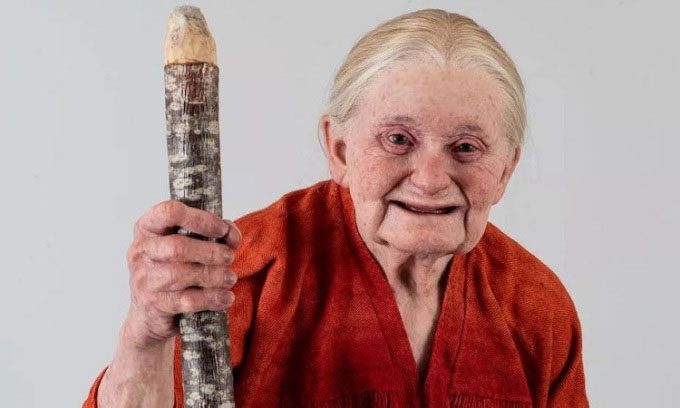Using a skeleton excavated from the late 13th century, researchers have created a model reconstructing the appearance of a medieval woman.
Ellen Grav, an archaeologist at the Norwegian University of Science and Technology (NTNU), introduced a lifelike reconstruction model of a woman who lived nearly 800 years ago in Norway named Tora. The reconstructed image of Tora is currently on display at the NTNU museum, as reported by Live Science on November 29.

Tora likely lived to be 65 years old in medieval Trondheim. (Photo: NTNU).
Tora was born near the end of the 13th century and lived in Trondheim, a city located in central Norway. During that time, this medieval metropolis rapidly developed and became home to craftsmen and merchants. Although there are no records of Tora, archaeologists piece together her life story based on clues from the skeleton and burial site. They know that Tora was buried in the churchyard near the street where merchants lived, indicating she may have belonged to a trading family.
The research team believes that individuals buried in the churchyard were relatively wealthy. Since Tora lived to about 65 years of age, Grav and her colleagues believe she had a good life during that period. A deformity in Tora’s spine led researchers to conclude that she suffered from kyphosis. She also lost teeth in her lower jaw and lived with that condition for a long time before her death.
Grav collaborated with Thomas Foldberg, a makeup artist in the film industry in Denmark, to make Tora’s reconstructed image as lifelike as possible. Unlike many facial reconstructions based on X-ray or CT scans, Foldberg focused on the skeleton to create a 3D model of Tora. For the skin tone, Foldberg used silicone and even created age spots on her body. The eyebrows, eyelashes, and hair were attached strand by strand.
Regarding Tora’s clothing, Marianne Vedeler, a professor specializing in textile studies at the University of Oslo, Norway, relied on archaeological findings from the region dating back to Tora’s time. Subsequently, Vedeler commissioned local tailors to create clothing for the model.


















































